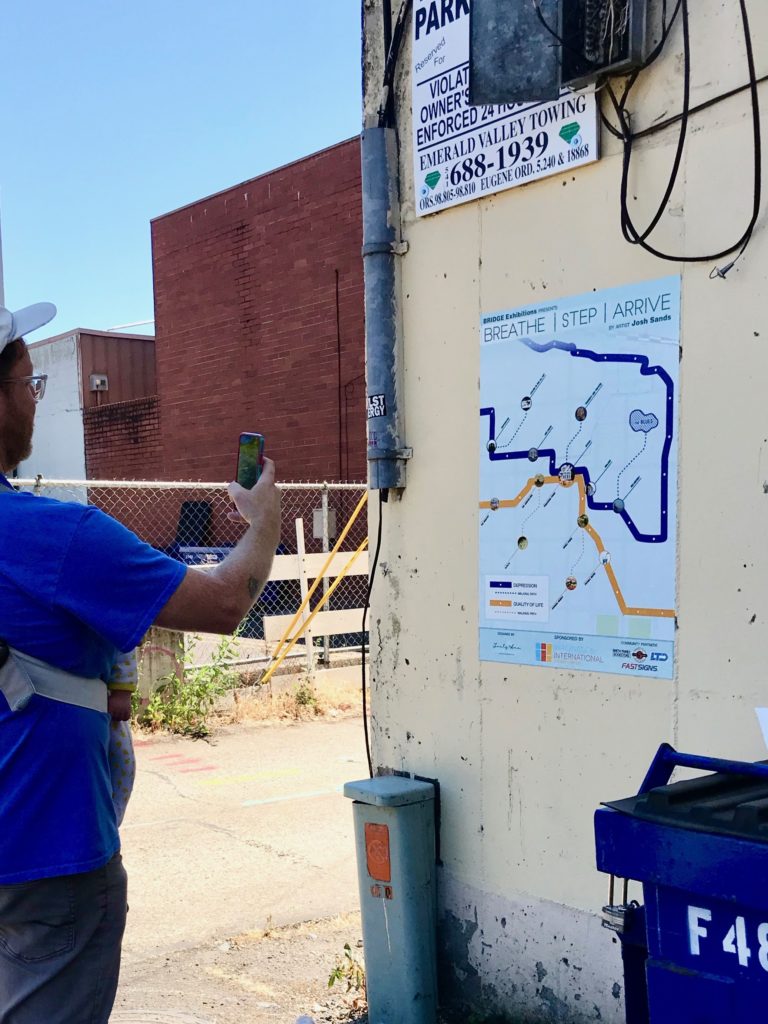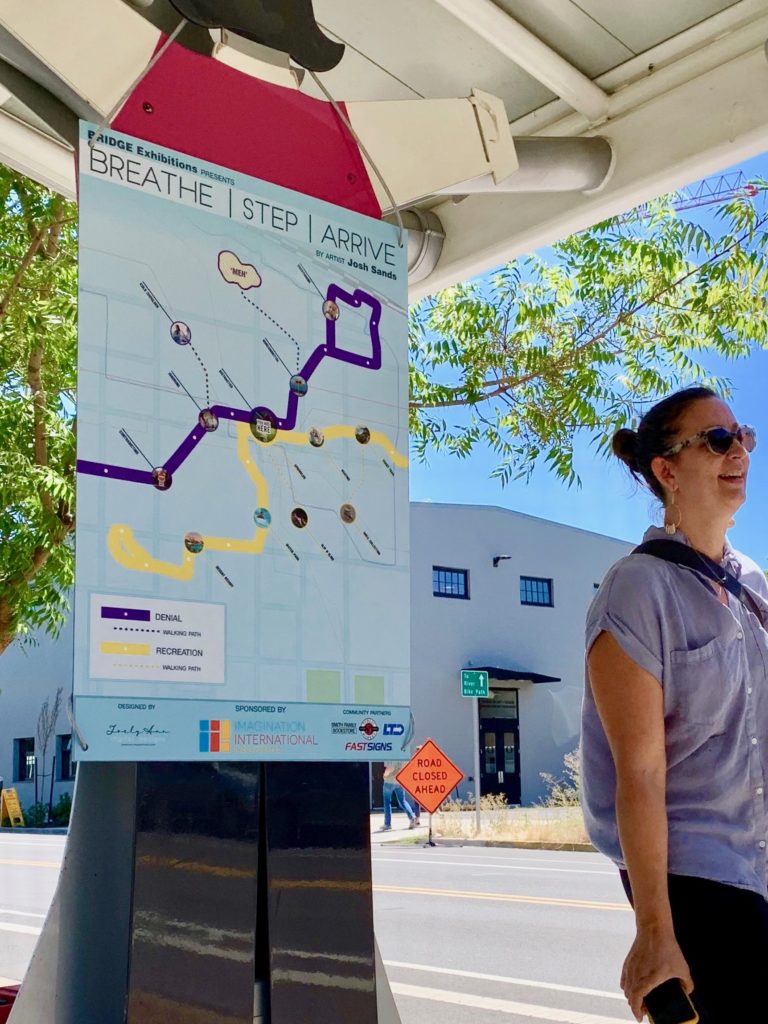Critical MAS: Sandra Honda on Josh Sands’ “Breathe, Step, Arrive”


Written by Sandra Honda
Clever and thought-provoking, Josh Sands’ “Breathe, Step, Arrive” focuses on the global water problem – what it is and what we’re doing about it. This is no mere science fair project or regurgitation of the facts, but a look at water through the novel lens of grief.
Sands gives us five cleanly-designed posters done as professional signage. At first glance, the posters appear to be subway maps, installed at three bus stops, Smith Family Bookstore and 5th Street Public Market. You know these subway maps. Red line goes to one end of town, blue line to another, with stops shown on each route. But wait! What’s this? Where are we going with these maps? After all, Eugene has no subway. Look more closely and you’ll see that Sands has slyly used this familiar form of visual communication to get us to look. If you take the bait, you’ll find two “subway” lines helping us navigate along two different, yet intersecting, paths. One shows us what’s happening with our water resources along one; the other connects us to one of the five stages of grief – denial, anger, bargaining, depression, and acceptance – and how it might affect where we are in our actions to do something productive about the problem.
Denial gets paired with recreation, anger with ecology, bargaining with conserving, and percent of “acceptance of acceptance” with percent of water composition. The pairings make you pause and think. That’s that point. The subway “stops” are visual icons with examples illuminating each concept. The wording does not get overly wonky or scientific. The one place on each map where two lines intersect is labeled “You are here,” and where one ostensibly might change course. As with grief, there is no guarantee that we will move through to the other end.
The BRIDGE Exhibition pushes Sands’ work into the sphere of public art, raising a serious environmental problem into the community spotlight. Josh Sands’ contribution to this exhibition is a good example of visual art doing what traditional modes of science communication have had difficulty with, vis à vis climate change. Science – its data and analyses – has never been more important to how we can gauge the seriousness of an environmental problem and how we can act as individuals, municipalities and nations to create a sustainable future for our planet.
As a former scientist and science communicator, I am too painfully aware of how we often fail or have been too slow to convince some through scientific prowess. But artists like Josh Sands are bringing us new ways to peck at denial (the first stage of grief) and engage the public in fresh ways of understanding the world’s water crisis, and our role in making it better or worse. While many environmentally-centric artworks make strong emotional connections to unsettling, even heart-wrenching, changes and harms to the environment, “Breathe, Step, Arrive” is more clinical. It succeeds in reinforcing the human impact on water resources and where we need to be heading. The stages of grief serve as a reminder of the emotional forces that get in the way of progress. There is need for the more clinical view, not only as statements of need and activism, but also as equal partner to how research – scientific, social and art – can be brought to bear on communicating about global environmental crises. Perhaps through more partnerships across disciplines, from practitioners to academics, and with government agencies, as here with Eugene Cultural Services, the public can be rallied to action sooner than later.
To learn more about the writing in the Critical MAS series, go to Critical MAS: Introduction.